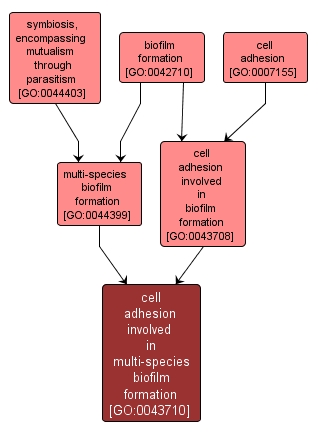GO TERM SUMMARY
|
| Name: |
cell adhesion involved in multi-species biofilm formation |
| Acc: |
GO:0043710 |
| Aspect: |
Biological Process |
| Desc: |
The attachment of a cell to a surface, via cell adhesion molecules, contributing to the formation of a biofilm composed of microorganisms of different species. |
Synonyms:
- cell adhesion during multi-species biofilm formation
|
|

|
INTERACTIVE GO GRAPH
|














